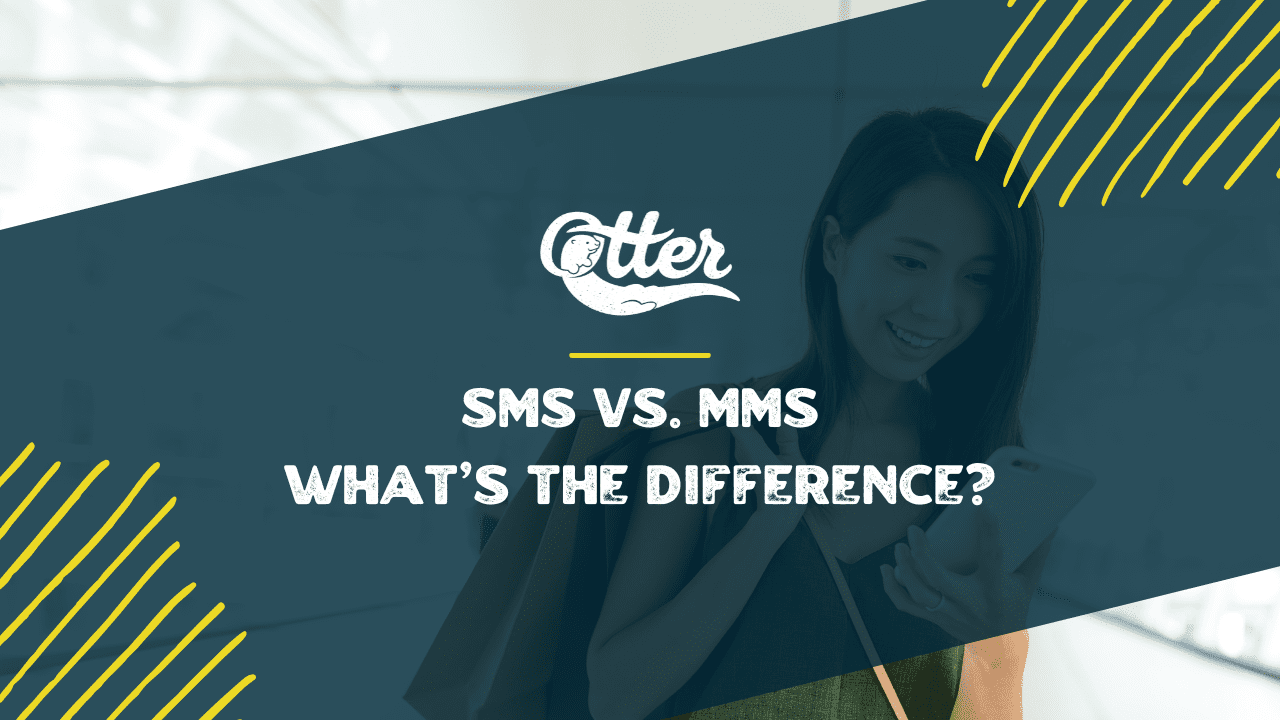Today, almost everyone, from individuals to corporations, regularly communicates via text message. Texting is widely used in the business world for a variety of purposes, including but not limited to marketing, customer service, scheduling, and more.
Messages sent via short message service (SMS) have an open rate of up to 82%.
Consumers have long shown a marked preference for texting as their primary means of communication.
Using SMS marketing software is a significant step, but you still need to maximize its benefits. Differentiating between SMS and MMS is essential in developing an effective texting strategy.
What is SMS?
The “Short Message Service” (SMS) was the first form of texting. It was developed in the 1980s, making it one of the earliest forms of texting technology.
A vital feature of a text message is its inability to include any media. Meaning it is limited to text, with a character limit of 160 per text.
What is MMS?
“MMS” refers to the Multimedia Messaging Service. This form of communication allows you to attach various forms of media, such as audio, video, and still images, as the name suggests.
It’s important to note that messages can contain more than 160 characters if necessary. MMS messages are limited to 1,600 characters.
SMS vs. MMS: How They Are Different
We can identify several essential distinctions between SMS and MMS using these definitions. The primary differences concern the types of content that can and cannot be sent.
- Message Length: SMS messages are limited to 160 characters. MMS texting, on the other hand, allows for up to 1,600 characters. That way, you won’t have to send several separate texts to convey everything you want to say.
- Media Included: An SMS can’t have any kind of media. Media files such as JPEGs, MP3s, or GIFS are not allowed. An MMS allows for the inclusion of any such embedded media.
- Cost: MMS is more expensive than SMS because it requires sending significantly more data. You should expect to pay more from your mobile network or messaging service for the additional data you send. Depending on their service plan, the recipient may also be required to pay a fee to receive MMS messages.
- Who Can Send and Receive: SMS functionality is built into all mobile devices. In contrast, almost all modern mobile devices can read MMS messages, though not all. Those without smartphones will be unable to receive MMS messages.

Should You Use SMS or MMS For Your Business?
When communicating with customers, you must determine whether you will use short or multimedia message service (SMS or MMS). Examining the following benefits and drawbacks of each option should help you make your choice:
Pros of SMS Messages
- It won’t take much time or effort if you just say something in a few succinct words.
- Since there is no set price for receiving an SMS message, your customers won’t have to worry about incurring any costs.is a common part of any phone plan.
- Save money in your budget.
Cons of SMS Messages
- It’s easy to reach the message’s character limit.
- There is no room for audio or visual content.
- It’s more challenging to grab people’s attention without multimedia.
Pros of MMS Messages
- It’s highly unlikely that you’ll use up all 1,600 characters.
- You can add multimedia elements such as GIFs, images, videos, audio, and emojis.
- Integrating multimedia into your communications increases their appeal.
- Research shows that they are more effective at keeping people interested. MMS messaging has been said to increase your engagement rate by as much as 250%. It’s also ten times more likely that someone will forward an MMS to someone else.
Cons of MMS Messages
- Not everyone in your target market can get MMS texts.
- Some of your customers won’t be able to receive your texts because MMS messaging isn’t included in their phone plans.
- Sending MMS messages will cost you more money.
- You’ll have to make or pay for your visuals and video if you want to add them.
How To Choose Between SMS and MMS
Customers respond positively when businesses use MMS to sound more human in their communications. That’s why they’re so effective when trying to get a customer to write a review or share a discount offer.
Alternatively, SMS messages are ideal for sending quick reminders or checking in after an event. There are many reasons why most businesses should consider implementing an SMS messaging system, including:
- Customer support
- Collecting feedback
- Sending reminders
- Confirming orders
- Tracking deliveries
- Time-sensitive messages
- Text-to-join campaigns
On the other hand, you’ll want to use MMS for the following:
- Detailed or information-rich messages
- Grabbing attention
- Promotion of goods and services via multimedia
- Event Invitations
- Holiday greetings with images
- Sharing QR codes
Of course, there will always be outliers, so paying attention to your customer base and learning which types of messages they respond best to in various scenarios is essential.
You’ll need to think seriously about what your intended audience wants to hear. Because not everyone in your target audience will have a smartphone, you should limit your communications with them to SMS and perhaps the occasional MMS. However, if your audience consists primarily of millennials, it is recommended that you use a mix of SMS and MMS messaging, emphasizing MMS when appropriate.
Conclusion
Although it’s easy to grasp the distinction between SMS and MMS, it is more challenging to know when to employ one over the other. Comparing and contrasting SMS and MMS will help you choose the right one for your needs. In this way, you can strike a balance between your available funds, the features you’d like to implement, and the preferences of your target audience. You’ll have instant access to SMS and MMS when you sign up for OtterText’s free trial. Additional features, such as review collection, automated responses, and analytics, are included for your company’s convenience.



